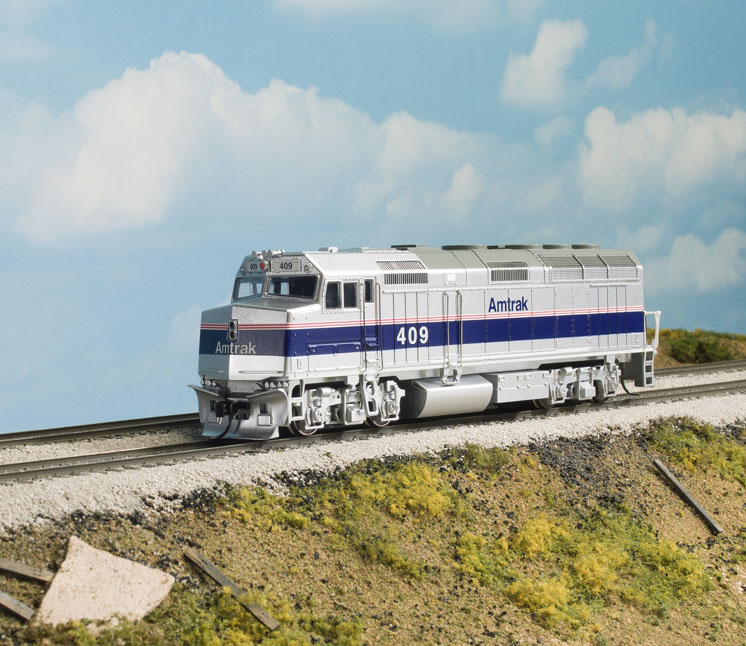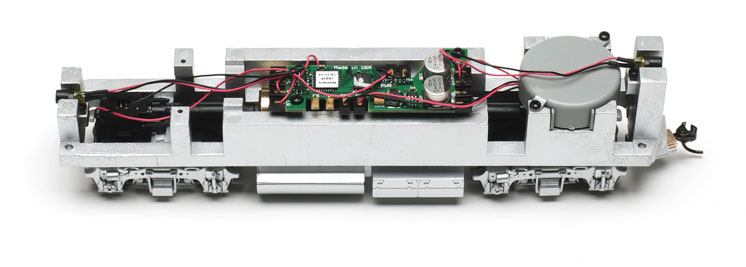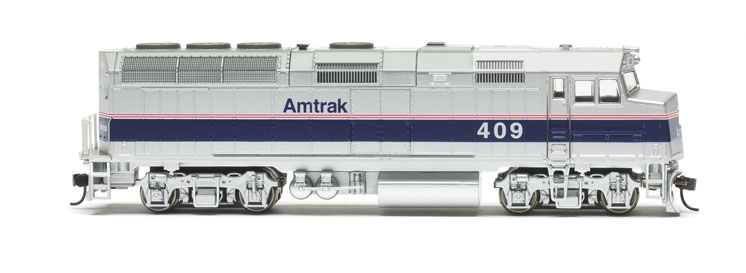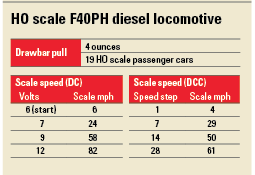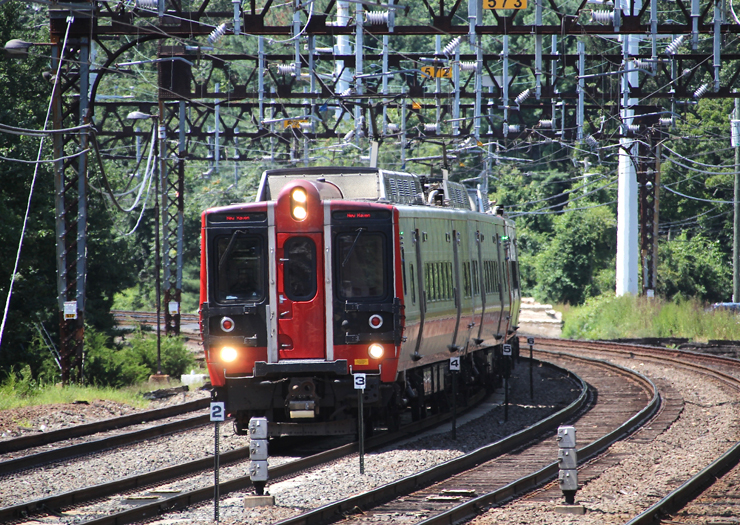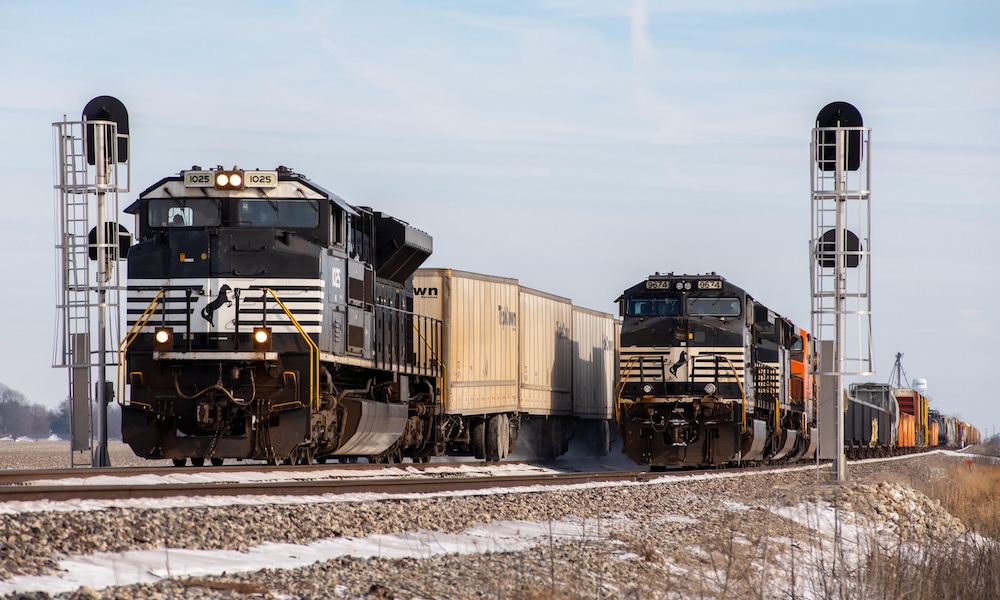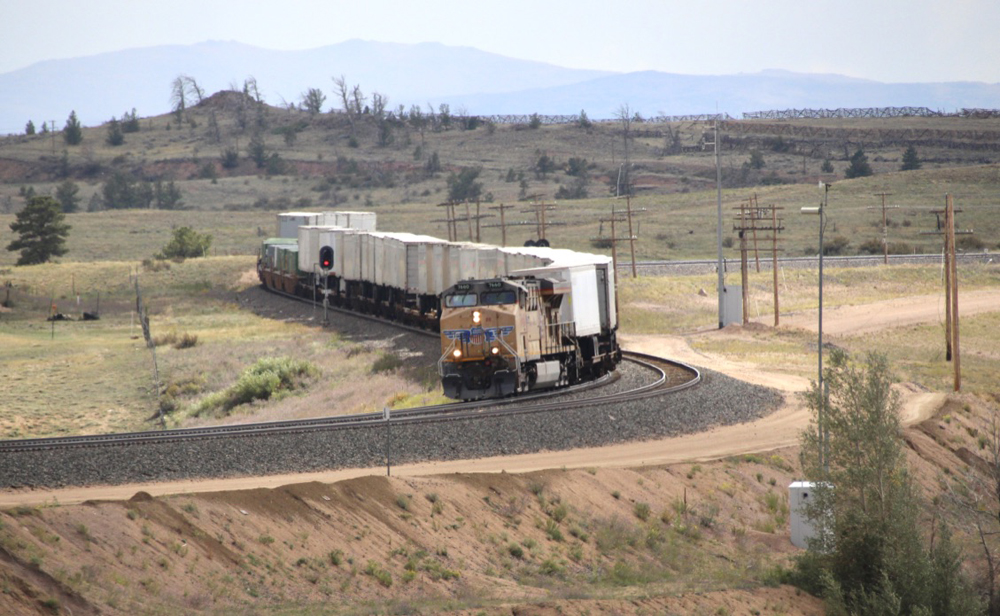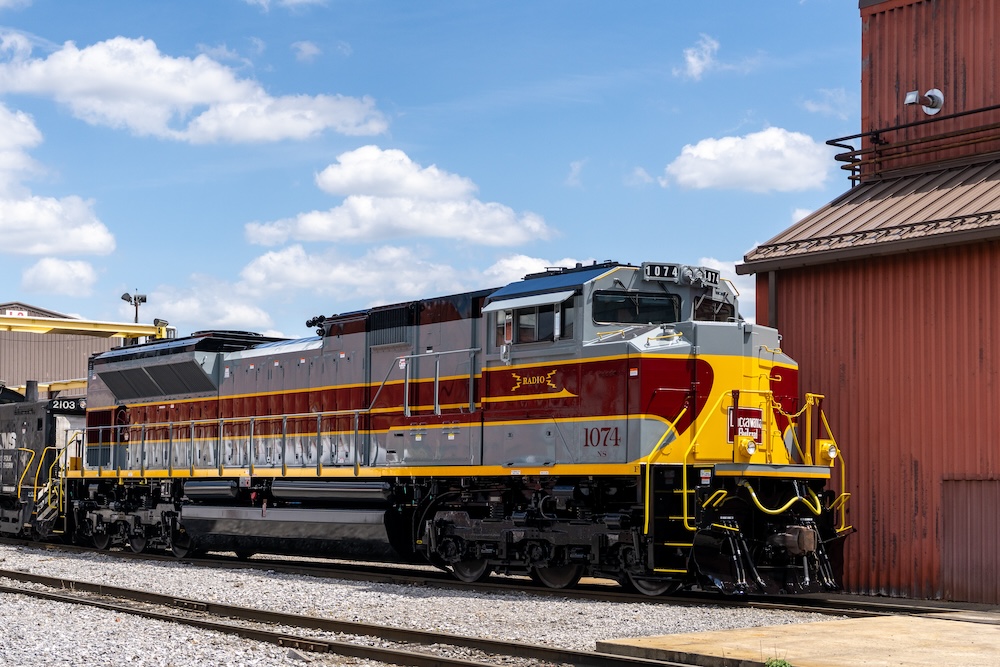A powerful passenger hauler, the Walthers HO scale Electro-Motive Division F40PH, is back as part of the WalthersMainline series. Although not as highly detailed as a WalthersProto locomotive, the F40PH has been upgraded with the same mechanism as a top-of-the line model. It’s also one of the first WalthersMainline locomotives to be available with a factory-installed dual-mode SoundTraxx decoder that captures the sounds of the prototype on direct-current (DC) and Digital Command Control (DCC) layouts. The Walthers F40PH was previously reviewed as a DC model in the May 1998 Model Railroader.
The prototype. General Motors Electro-Motive Division delivered the first 30 F40PH diesel-electric locomotives to Amtrak in 1976. The Amtrak F40PH fleet eventually totaled 210 units. The F40PH was Amtrak’s primary passenger locomotive for the next 25 years. Initially the F40PH’s EMD 645E3 prime mover was rated at 3,000 hp. Horsepower was increased to 3,200 in many later units. The horsepower boost helped compensate for the head-end power (HEP) generator that was connected to the prime mover and provided electricity for the rest of the train. The generator could reduce power available for the traction motors by as much as 700 hp. Running continuously at full throttle to generate electricity, the HEP-equipped F40PH earned its “screamer” nickname from railroaders and railfans.
Most of the Amtrak F40PH fleet is now retired, although some locomotives survive as non-powered cab units. Many also still serve on commuter railroads.
The model. The Walthers F40PH uses most of the tooling from the 1998 release and closely matches prototype drawings published in the April 1987 Model Railroader. The height of the short hood is 4 scale inches too short. This would be imperceptible except that the discrepancy causes the striping and lettering placement across the nose to be slightly out of position when compared to prototype photos. Aside from the nose the rest of the model’s livery matches its prototype, with sharp color separation.
The model accurately depicts a later production F40PH, referred to by railfans as a phase 2b version. Reflecting production changes that took place in 1977 and 1978, the major spotting features of this phase include a forward-mounted 1,800-gallon fuel tank, a wide horn slot on the cab roof for a Nathan K5LA 5-chime air horn, and four vertical ribs at the rear of each side of the carbody. In the 1990s, no. 409 and many other F40PHs received ditch lights, but these aren’t included on the model.
Most of the details, including rivet seams, doors, and rooftop grills, are molded in the one-piece plastic body shell and prototypically placed. There is clear glazing in all the cab windows.
All the vertical handrails are factory-installed wire parts. The factory-installed rear handrails are molded in light gray flexible plastic.
Horizontal grab irons aren’t included, so the modeler will need to purchase these separately. Thankfully, the model features drill starting points for most of the grab iron locations as well as the m.u. hoses on the front and rear pilots found on the prototype, which makes installing these parts much easier. Modelers may also wish to add windshield wipers and other detail parts.
Mechanism. After removing the front and rear couplers, I removed four screws: one at each corner of the chassis. I could then lift off the body shell.
A can motor with a brass flywheel on each end rests in the center of a die-cast metal chassis. Universal shafts connect the motor to truck-mounted gearboxes. The SoundTraxx decoder is attached to the weight above the motor. A round 28mm speaker is housed in a plastic enclosure on the rear of the chassis. Both the headlight and rear light are bright yellow light-emitting diodes.
Speed tests. At 6 volts on our DC test track the model measured 6 scale mph and accelerated smoothly to a top speed of 82 scale mph at 12 volts. A prototype F40PH could be geared for a maximum speed of 103 mph.
Using an NCE Powercab on our DCC test track, I set the model’s decoder to 28 speed steps. The F40PH accelerated from 4 scale mph in speed step 1 to 61 scale mph in speed step 28, which is more than fast enough for most model railroad main lines. For finer slow speed control, I set the decoder to 128 speed steps and the model started moving at 1 scale mph in speed step 1.
The F40PH can handle 18″ radius curves and no. 4 turnouts. The model’s exceptional drawbar pull ensures that it’s more than capable enough to handle a typical Amtrak passenger consist.
Sound. While the model’s SoundTraxx decoder isn’t a full-featured Tsunami, it does feature the same 16-bit sound quality that accurately captures the rumble of the EMD 645 engine. Out of the box, the volume levels were set to my liking with the horn prominent over the prime mover. Adjusting the overall volume as well as the volume of the individual effects is simply a matter of programming configuration variables (CVs).
A short printed instruction sheet is included with the model and outlines the supported functions, but this didn’t include a list of supported CVs. A diesel user’s guide is available as a free download at www.soundtraxx.com, but figuring out which CVs I could program with this decoder took some trial and error.
The included user-triggered sound effects are the long and short horn blasts, bell, and mute. I could also control the headlight. Coupler crash, brake squeal, and dynamic brake fan sounds aren’t included on this decoder. The train brake feature, where a function button is used as a brake to actually stop the locomotive, is absent. Much of the programming capability of a full-featured SoundTraxx Tsunami is ava ilable. I could easily remap the available functions and effects to keys 0 through 9. To get prototypical non-directional lighting control, I remapped functions 1 and 0 to independently control the front and rear lights, and set function 5 to control the bell.
I also remapped functions 7 and 8 for manual notching, so I could increase or decrease the prime mover rpm sounds independently from the throttle.
Manual notching is helpful for modeling prototypical HEP operation. While hauling a train the locomotive remains in notch 8 continuously to power the HEP generator. At extended station stops, the throttle can be reduced to notch 6. When running light, the HEP generator is disengaged and the throttle moves the engine rpm up or down like any other diesel locomotive.
After adding some acceleration and deceleration momentum (CVs 3 and 4) the F40PH started and stopped much more prototypically. I advance consisted two F40PHs and since the decoder supports CVs 21 and 22, I could use the consist address to trigger locomotive functions like the horn and bell.
On our DC test track the locomotive’s headlight and sounds turned on at 6V. Sound effects are limited in DC to the prime mover and a bell that sounds when the F40 moves at less than 25 scale mph. A sound controller, such as a Model Rectifier Tech 6, provides access to the decoder’s sound functions on DC.
Realistic sound effects and an upgraded mechanism are welcome additions to the Walthers F40PH. The smooth-running locomotive would be right at home hauling intercity or commuter trains on an HO scale model railroad.
Price: $199.98 (DCC sound), $129.98 (DC no sound)
Manufacturer
Wm. K. Walthers Inc.
P.O. Box 3039
Milwaukee, WI 53201
Era: 1978 to mid-1990s (as detailed)
Road names (multiple road numbers): Amtrak (phase IV), Amtrak (phase III), Alaska RR, CalTrain, Metra
Features
▪▪All-wheel drive and electrical pickup
▪▪Die-cast metal chassis
▪▪Five-pole skew-wound motor with dual brass flywheels
▪▪Proto-Max metal knuckle couplers at correct height
▪▪RP-25 contour metal wheels in gauge
▪▪SoundTraxx DCC sound decoder (DCC version only)
▪▪Upgraded mechanism with 14:1 gear ratio and helical gears
▪▪Weight: 1 pound 1 ounce





